Volvo EX40 vs Hyundai Inster – Differences & prices compared
Everyday use, family trips or long-distance drives – here’s where the differences show.
Discover whether Volvo EX40 or Hyundai Inster fits your lifestyle better.
Here’s where it gets real: The technical differences in detail
Costs and Efficiency: Looking at overall running costs, both models reveal some interesting differences in everyday economy.
Hyundai Inster has a convincingly advantage in terms of price – it starts at 20500 £, while the Volvo EX40 costs 42800 £. That’s a price difference of around 22363 £.
In terms of energy consumption, the advantage goes to the Hyundai Inster: with 14.30 kWh per 100 km, it’s somewhat more efficient than the Volvo EX40 with 16.60 kWh. That’s a difference of about 2.30 kWh.
As for range, the Volvo EX40 performs noticeable better – achieving up to 576 km, about 206 km more than the Hyundai Inster.
Engine and Performance: Power, torque and acceleration are the classic benchmarks for car enthusiasts – and here, some clear differences start to show.
When it comes to engine power, the Volvo EX40 has a clearly edge – offering 442 HP compared to 115 HP. That’s roughly 327 HP more horsepower.
In acceleration from 0 to 100 km/h, the Volvo EX40 is convincingly quicker – completing the sprint in 4.60 s, while the Hyundai Inster takes 10.60 s. That’s about 6 s faster.
In terms of top speed, the Volvo EX40 performs somewhat better – reaching 180 km/h, while the Hyundai Inster tops out at 150 km/h. The difference is around 30 km/h.
There’s also a difference in torque: the Volvo EX40 pulls convincingly stronger with 670 Nm compared to 147 Nm. That’s about 523 Nm difference.
Space and Everyday Use: Cabin size, boot volume and payload all play a role in everyday practicality. Here, comfort and flexibility make the difference.
Seats: Volvo EX40 offers to a small extent more seating capacity – 5 vs 4.
In curb weight, the Hyundai Inster is decisively lighter – 1380 kg compared to 2040 kg. The difference is around 660 kg.
In terms of boot space, the Volvo EX40 offers noticeable more room – 410 L compared to 280 L. That’s a difference of about 130 L.
In maximum load capacity, the Volvo EX40 performs evident better – up to 1400 L, which is about 341 L more than the Hyundai Inster.
When it comes to payload, Volvo EX40 noticeable takes the win – 480 kg compared to 357 kg. That’s a difference of about 123 kg.
Our conclusion: The Volvo EX40 proves to be wins the duel decisively and thus becomes our DriveDuel Champion!
Overall, Volvo EX40 is the better all-rounder in this comparison.
Volvo EX40
The Volvo EX40 represents a new chapter in the brand's commitment to sustainability and innovation, combining elegant Scandinavian design with cutting-edge electric vehicle technology. With its spacious interior and intuitive technology, the EX40 provides a comfortable and connected driving experience. The focus on eco-friendly materials and efficient performance makes it an attractive choice for those seeking a responsible and stylish drive.
details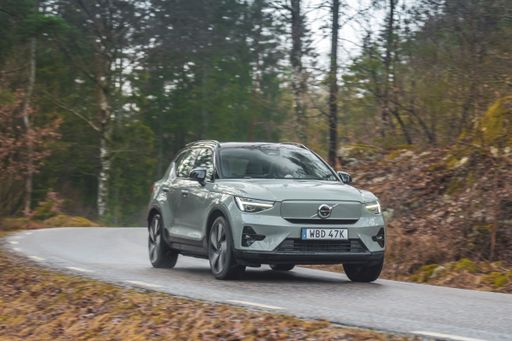 @ media.volvocars.com
@ media.volvocars.com
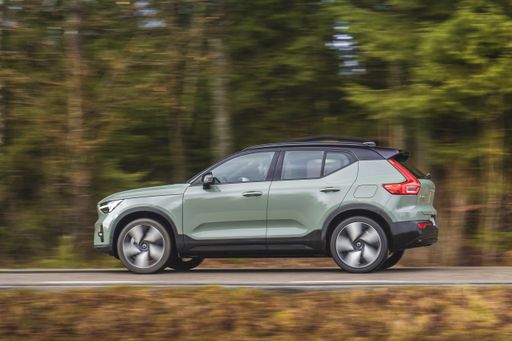 @ media.volvocars.com
@ media.volvocars.com
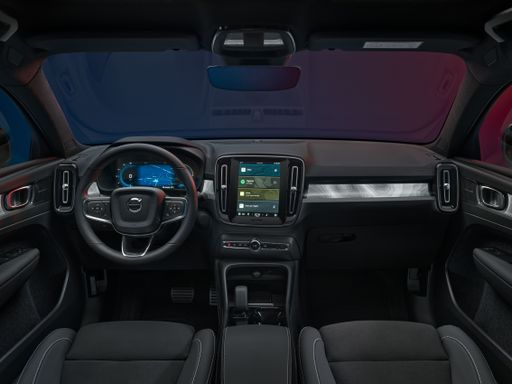 @ media.volvocars.com
@ media.volvocars.com
Hyundai Inster
The Inster has quickly captured the attention of automotive enthusiasts with its striking design and dynamic performance. This model seamlessly blends advanced technology with comfort, making it an ideal choice for both daily commutes and adventurous road trips. With its spacious interior and innovative features, the Inster promises an exhilarating driving experience that doesn’t compromise on practicality.
details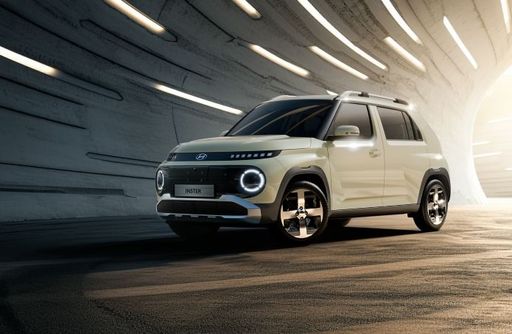 @ hyundai.news
@ hyundai.news
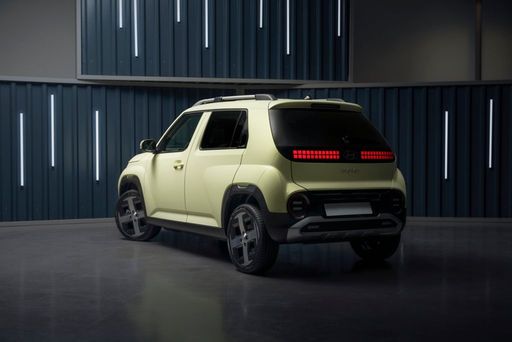 @ hyundai.news
@ hyundai.news
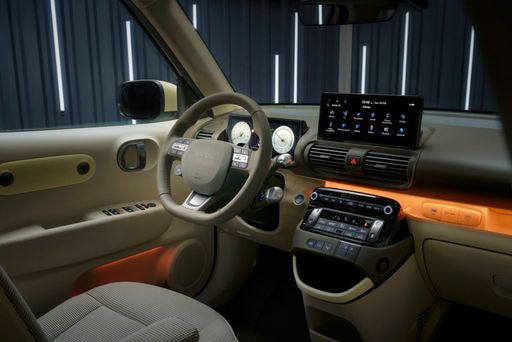 @ hyundai.news
@ hyundai.news

|

|
|
|
|
Costs and Consumption |
|
|---|---|
|
Price
42800 - 58200 £
|
Price
20500 - 25800 £
|
|
Consumption L/100km
-
|
Consumption L/100km
-
|
|
Consumption kWh/100km
16.6 - 17.6 kWh
|
Consumption kWh/100km
14.3 - 15.1 kWh
|
|
Electric Range
480 - 576 km
|
Electric Range
327 - 370 km
|
|
Battery Capacity
67 - 79 kWh
|
Battery Capacity
42 - 49 kWh
|
|
co2
0 g/km
|
co2
0 g/km
|
|
Fuel tank capacity
-
|
Fuel tank capacity
-
|
Dimensions and Body |
|
|---|---|
|
Body Type
SUV
|
Body Type
SUV
|
|
Seats
5
|
Seats
4
|
|
Doors
5
|
Doors
5
|
|
Curb weight
2040 - 2170 kg
|
Curb weight
1380 - 1433 kg
|
|
Trunk capacity
410 L
|
Trunk capacity
238 - 280 L
|
|
Length
4440 mm
|
Length
3825 - 3845 mm
|
|
Width
1863 mm
|
Width
1610 mm
|
|
Height
1647 mm
|
Height
1575 - 1610 mm
|
|
Max trunk capacity
1286 - 1400 L
|
Max trunk capacity
1059 L
|
|
Payload
430 - 480 kg
|
Payload
317 - 357 kg
|
Engine and Performance |
|
|---|---|
|
Engine Type
Electric
|
Engine Type
Electric
|
|
Transmission
Automatic
|
Transmission
Automatic
|
|
Transmission Detail
Reduction Gearbox
|
Transmission Detail
Reduction Gearbox
|
|
Drive Type
Rear-Wheel Drive, All-Wheel Drive
|
Drive Type
Front-Wheel Drive
|
|
Power HP
238 - 442 HP
|
Power HP
97 - 115 HP
|
|
Acceleration 0-100km/h
4.6 - 7.3 s
|
Acceleration 0-100km/h
10.6 - 11.7 s
|
|
Max Speed
180 km/h
|
Max Speed
140 - 150 km/h
|
|
Torque
420 - 670 Nm
|
Torque
147 Nm
|
|
Number of Cylinders
-
|
Number of Cylinders
-
|
|
Power kW
175 - 325 kW
|
Power kW
71 - 85 kW
|
|
Engine capacity
-
|
Engine capacity
-
|
General |
|
|---|---|
|
Model Year
2024
|
Model Year
2025
|
|
CO2 Efficiency Class
A
|
CO2 Efficiency Class
A
|
|
Brand
Volvo
|
Brand
Hyundai
|
Is the Volvo EX40 offered with different drivetrains?
The Volvo EX40 is available as Rear-Wheel Drive or All-Wheel Drive.
The prices and data displayed are estimates based on German list prices and may vary by country. This information is not legally binding.
